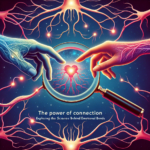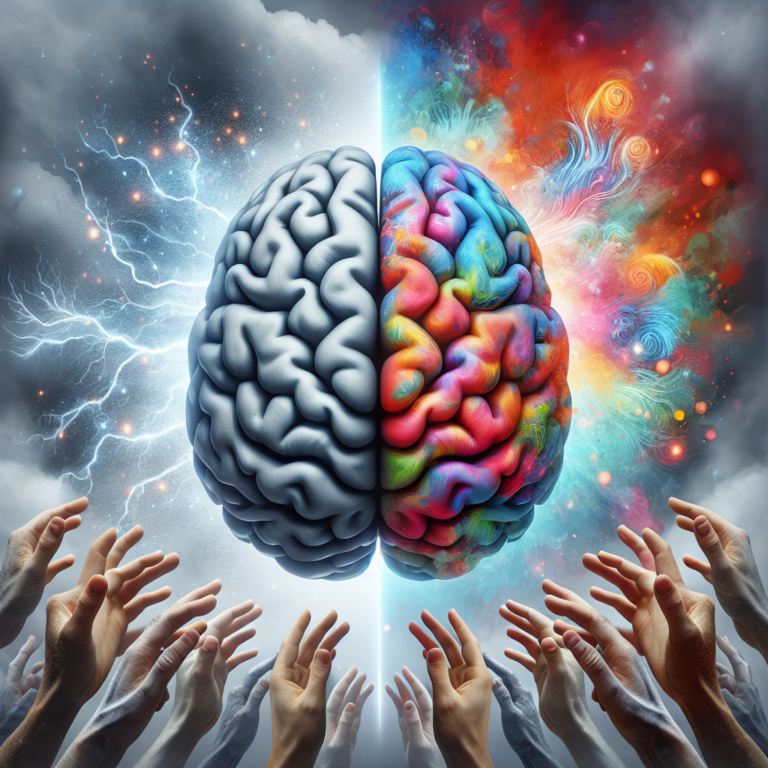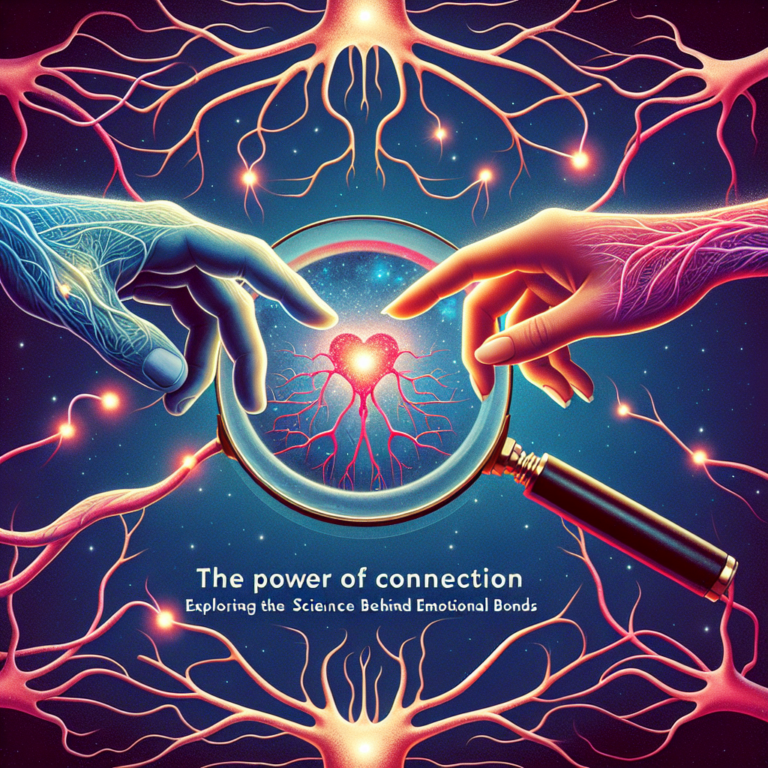Navigating the Ups and Downs: An Essential Guide to Identifying Bipolar Disorder Symptoms
Introduction
Life is often a series of highs and lows, but for those with bipolar disorder, these fluctuations can transform into turbulent storms that interfere with daily functioning. Understanding and identifying the symptoms of bipolar disorder is pivotal not only for individuals navigating this mental health condition but also for their loved ones and caregivers. In "Navigating the Ups and Downs: A Guide to Identifying Bipolar Disorder Symptoms," we will explore the various facets of this complex disorder, highlighting the signs that precede manic and depressive episodes, and providing actionable insights for effective management.
Bipolar disorder affects millions of individuals worldwide, yet misconceptions continue to cloud the understanding of its nuances. The importance of proper identification cannot be overstated; early recognition of symptoms facilitates timely intervention and support. In this article, we will engage with real-world case studies, utilize charts for clarity, and share expert opinions to provide a comprehensive overview of bipolar disorder. Join us as we foster a deeper understanding of this condition and empower ourselves with knowledge.
Understanding Bipolar Disorder
What is Bipolar Disorder?
Bipolar disorder, formerly known as manic depression, is characterized by extreme mood swings ranging from depressive lows to manic highs. These shifts can vary from days to months, affecting an individual’s energy levels, activity, sleep, and overall ability to function.
Types of Bipolar Disorder
-
Bipolar I Disorder: Defined by manic episodes lasting at least seven days or by manic symptoms that are so severe that immediate hospital care is needed. Depressive episodes typically occur as well, lasting at least two weeks.
-
Bipolar II Disorder: A milder form, characterized by a pattern of depressive episodes and hypomanic episodes, but not the full-blown manic episodes typical of Bipolar I.
- Cyclothymic Disorder: Here, individuals experience periods of hypomania as well as periods of depressive symptoms lasting for at least two years (one year in children and adolescents) but the symptoms do not meet the diagnostic requirements for a hypomanic episode or a depressive episode.
The Importance of Identification
Navigating the ups and downs of life can be particularly burdensome when untreated symptoms of bipolar disorder interfere with one’s personal and professional relationships. Recognizing and understanding the symptoms is the first step toward effective management, allowing individuals to reclaim a sense of normalcy and balance in their lives.
Symptoms of Bipolar Disorder
Manic Episodes
The defining feature of manic episodes is an observable increase in energy and activity. Here are common symptoms:
- Increased Energy and Activity: Feeling overly energetic or more productive than usual.
- Euphoria: An exaggerated sense of happiness or well-being unrelated to circumstances.
- Impulsivity: Engaging in risky behaviors, perhaps overspending or making impulsive decisions.
- Racing Thoughts: Thoughts and ideas that appear to flow rapidly, making it hard to concentrate.
Case Study: Taylor’s Rise
Taylor, a 29-year-old graphic designer, began experiencing manic episodes shortly after graduating. She described periods when her energy surged, leading her to work extremely late into the night on creative projects. Though these phases initially felt exhilarating, the impulsivity she displayed—such as booking spontaneous trips to far-off locations—soon left her in precarious financial situations.
Analysis: Taylor’s journey illustrates the emotional highs that can accompany mania, yet underscores the potential consequences of unmonitored symptoms.
Depressive Episodes
Depressive episodes present the opposite end of the spectrum, marked by:
- Low Energy: Persistent fatigue and decreased motivation.
- Disinterest in Activities: Loss of pleasure in activities once enjoyed.
- Feelings of Worthlessness: A continual sense of hopelessness or guilt.
- Cognitive Function Decline: Difficulty concentrating, making decisions, or remembering things.
Case Study: Alex’s Struggle
At 33, Alex faced severe depressive episodes that left him unable to hold onto a job or maintain friendships. He found himself withdrawing from social activities he once loved, such as hiking and playing soccer. Feeling hopeless led him to avoid seeking help, thinking he could simply “snap out of it."
Analysis: This case serves as a stark reminder of the crushing burden of depressive episodes and emphasizes the importance of recognizing the need for assistance.
Hypomanic Episodes
Hypomania is similar to mania but less severe. While it can energize individuals, it may also lead to risky behavior if left unchecked. Recognizing these milder ups and downs is crucial for prevention.
Navigating Daily Life with Bipolar Disorder
Strategies for Self-Management
Identifying bipolar disorder symptoms is just the first step; knowing how to navigate through these symptoms is essential. Here are effective strategies:
-
Track Mood Swings: Journaling daily moods can help recognize triggers and patterns. Using an app can enhance this process.
-
Establish a Routine: Regular sleep, meals, and activity schedules can provide structure, helping to stabilize moods.
-
Communicate Openly: Maintain an open dialogue with trusted friends or family members about symptoms and feelings.
- Seek Professional Help: Therapy and medication management can provide crucial support.
The Role of Therapy and Medication
Therapeutic approaches, including Cognitive Behavioral Therapy (CBT) and Dialectical Behavior Therapy (DBT), have proven effective in managing bipolar disorder. Medication, ranging from mood stabilizers to antipsychotics, can also help maintain balance.
Support Systems and Resources
Building a support system is vital. Resources such as support groups or community health services can foster understanding and provide opportunities for shared experiences.
Statistical Insights
| Statistic | Value |
|---|---|
| Prevalence of Bipolar Disorder | Affects approximately 2.8% of the U.S. adult population |
| Average Age of Onset | Typically appears in late adolescence to early adulthood |
| Percentage of Individuals with Comorbid Disorders | Over 50% diagnosed with a mental health disorder also experience substance use issues |
The Importance of Education
Understanding bipolar disorder is an ongoing journey. Education about the condition can reduce stigma and bring awareness.
-
Within Families: Strengthen familial relationships by fostering open communication about mental health.
-
In Schools: Implementation of educational programs can create empathetic environments for peers.
- In the Workplace: Promote mental health resources and understanding to foster a supportive work environment.
Conclusion
Understanding bipolar disorder is essential for those affected and their loved ones. In "Navigating the Ups and Downs: A Guide to Identifying Bipolar Disorder Symptoms," we have explored the myriad aspects of this complex condition. Identifying symptoms is the foundation upon which effective management and support can be built.
While the journey may seem daunting, with proper recognition and resources, those navigating bipolar disorder can find hope and balance. Remember, it’s not about eliminating the ups and downs; it’s about learning to ride the waves.
FAQs
1. What are the first signs of bipolar disorder?
The first signs can include mood swings, changes in sleep patterns, increased impulsivity, and a sense of euphoria, followed by feelings of hopelessness.
2. How is bipolar disorder diagnosed?
A mental health professional will conduct a comprehensive evaluation which may include interviews and questionnaires regarding mood history and behavior.
3. Can bipolar disorder be treated?
Yes, while there is no cure, bipolar disorder can be effectively managed with medication, therapy, and lifestyle changes.
4. Is it possible to live a normal life with bipolar disorder?
Many individuals with bipolar disorder lead fulfilling lives with proper management, support, and coping strategies.
5. How can I support someone with bipolar disorder?
Encourage open communication, support them in seeking help, and educate yourself about the condition to better understand their experiences.
In conclusion, navigating the complex landscape of bipolar disorder involves thorough understanding, proactive engagement, and open conversation. Armed with the information from "Navigating the Ups and Downs: A Guide to Identifying Bipolar Disorder Symptoms," individuals and their loved ones can take significant steps towards a balanced and fulfilling life.
















